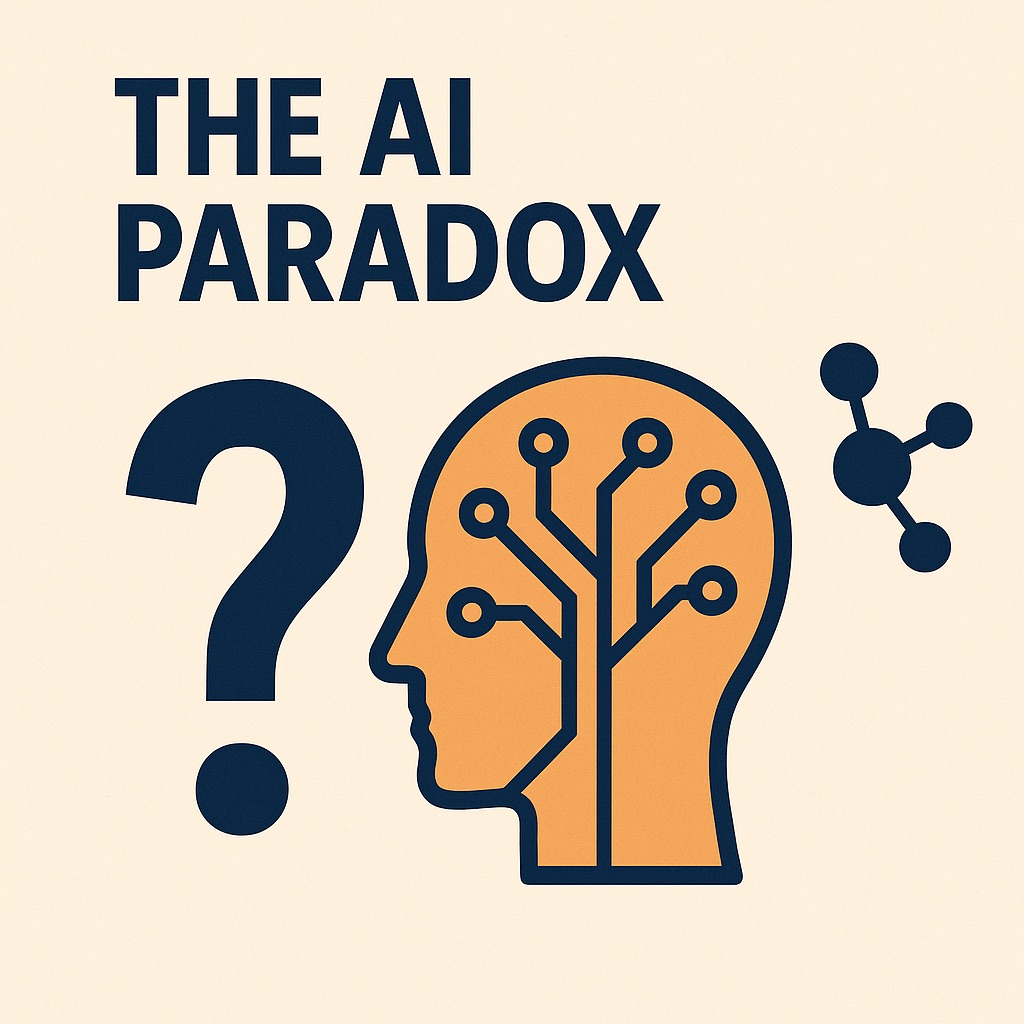
A policy stood for seven years.
Then it changed with one email.
No leader showed how they would live it first.
The message was clear: “This is for you, not for us.”
At the next team meeting, an employee asked her manager:
“Are you doing this too?”
The manager hesitated. Looked down.
“I’m not sure yet. Let’s wait and see.”
Trust leaked out of the room in seconds.
A new strategy was launched with glossy slides.
The purpose never explained.
The why never shared.
Values turned into bullet points. Culture turned into confusion.
Later, in the hallway, a scientist asked her director:
“Why are we doing this now?”
The answer: “Because it’s in the deck.”
No story. No connection. Just a PowerPoint.
This is how change fails.
Not in headlines.
Not in crises.
In the quiet gap between what leaders announce and what middle managers are left to carry.
Research shows culture drives performance more than performance drives culture.
And culture does not live in decks or policy updates.
It lives in daily choices.
When middle leaders have the tools to turn values into actions, change becomes real.
When they do not, trust dies one meeting at a time.
Middle leaders sit in the tightest squeeze of the organization.
Top leaders announce sweeping changes.
Strategies. Policies. Values campaigns.
Then they step back.
Employees look up for clarity.
Middle leaders stand in the middle with nothing but a deck in their hands.
One manager told me after a policy shift:
“My team wanted to know how this would change my own behavior. I did not know what to say.”
Another recalled a strategy rollout:
“People asked me why we were doing it. I had no story. Just the slides.”
Executives think communication is enough.
Employees want translation. They want to see purpose in action.
And when they do not?
Middle leaders endorse what they do not fully understand.
They avoid questions they cannot answer.
They protect themselves instead of building ownership.
This is the hidden breaking point of change. Not at the top. Not at the bottom.
Right in the middle, where alignment should live, and where it too often dies.
It is often described as the missing link in healthcare transformation .
Most managers do not want to fail their teams.
So they do what feels safe: endorse.
They repeat the mission statement.
They forward the CEO’s email.
They recite values in meetings.
And then they move on to budgets, reports, deadlines.
One biotech team lead admitted:
“I just echoed what the CEO said. But I did not change anything in how we worked. After a while, my team stopped listening.”
Another in medtech told me:
“I gave the strategy slides. People nodded. Then they asked, ‘So what do we do differently tomorrow?’ I had no answer.”
Endorsing looks aligned. It feels safe.
But it never travels beyond words.
Without enrichment, new rituals, new practices, new behaviors, change stays abstract.
Leaders feel like messengers, not builders.
Teams feel disconnected from purpose. See also: how leadership shapes or destroys teams .
That is why transformation stalls in the middle.
Not because leaders do not care.
Because they do not have a way to turn values into lived experience.
Middle leaders do not shift organizations by passing messages down.
They shift them when they turn strategy into actions their teams own.
That is the difference between endorsing and building.
In one program, managers redrew their role.
Not transmitters of top-down messages.
Translators and initiators.
Instead of saying, “Here is the new policy,” they asked, “Here is how this changes what we do tomorrow, what will we own together?”
That is when accountability came alive.
With wallbreakers, managers did not just talk about silos.
They named them. Broke them down. Built new ways of working.
Because they created the actions themselves, they carried them forward.
With rituals, we did not hand over a template.
We asked: “What small practice would make our values real here?”
One team invented a five minute huddle. Another designed a closing round of responsibilities.
Tiny actions. Repeated. Owned.
For more, see: transforming leadership and emotional culture .
And with decision circles, leaders mapped the choices they kept pushing upwards.
Then they made visible commitments: “This one is mine. I will not escalate it again.”
From that moment, accountability stopped being a word.
It became an act.
One manager put it best:
“I stopped thinking of myself as the person who passes information down. I started acting as the one who turned strategy into actions we owned.”
This is the breakthrough.
When middle leaders co-develop their own practices, change is not delivered.
It is lived.
Ownership takes root.
And transformation stops being a slogan, it starts being visible.
Executives do not fail because of strategy.
They fail because strategy never becomes actions people own.
Middle leaders are the missing link.
Give them only a deck, and they endorse.
Give them the right frame, and they translate, initiate, and build.
That is where transformation takes hold:
- In the rituals teams invent.
- In the decisions managers commit to own.
- In the conversations where silence turns into clarity.
This is not theory.
It is practice, guided, facilitated, co-developed.
See also: why harnessing emotions matters to leadership .
Our role is to spark, frame, and challenge.
Theirs is to own from day one.
When that happens, you do not just get culture.
You get execution.
You get accountability.
You get transformation that sticks.
Want your middle leaders to stop endorsing and start building?
Let’s talk → www.beez-consulting.com/contact
Why are middle managers critical for strategy execution?
Because they sit closest to teams and daily operations. They translate strategy into concrete actions that create results.
How can middle managers build accountability in practice?
Through visible commitments, decision ownership, and co-created rituals that teams design and repeat daily.
What role should executives play in transformation?
Executives set purpose and direction. Transformation sticks when middle leaders and teams co-develop practices that bring it to life.
What are practical ways to help leaders turn values into action?
Decision-circle mapping, wallbreaker exercises, co-created rituals, and accountability frameworks like 'above the line.'
How do Bee’z frameworks support leadership transformation?
We act as sparring partners, designing the frame, guiding the process, and challenging leaders. Teams co-develop practices from day one, ensuring ownership and impact.


Growth in healthcare isn’t about getting bigger anymore. It’s about getting better — and Europe’s hospitals are showing how. Discover how the next wave of leaders is changing healthcare.


From blame to accountability : how a culture of responsibility boosts care quality, engagement, and performance in healthcare. Let’s talk about this !


AI is everywhere in life sciences. It can design trial protocols in minutes, flag side effects before they appear, and even draft regulatory documents while you sleep.
